A radio-loud magnetar first observed in March 2020 suffered an apparent identity crisis, behaving like a pulsar until gradually settling into magnetar-like emissions in July. Plus, Mars’ moon Phobos, Jupiter’s moon Ganymede, and an interview with SETI Institute scientist Veselin Kostov about last week’s sextuple star system.
Media
Transcript
Hello and welcome to the Daily Space. I am your host Dr. Pamela Gay.
And I am your host Beth Johnson.
And we are here to put science in your brain.

CREDIT: SETI Institute
Today’s science starts out just plain weird. If you can make it through our brain-breaking opening stories, you’ll be rewarded with an interview with Dr. Veselin Kostov, the NASA Postdoctoral Fellow and SETI Institute Research Scientist behind last week’s announcement of a six-star system that is built out of a suite of three eclipsing binary stars.
Last summer we introduced you to a weird neutron star named Swift J1818.0-1607. This particular bundle of densely packed neutrons was first spotted flickering in X-rays in a way characteristic of a special kind of neutron star called a magnetar, which is a neutron star with an extremely powerful magnetic field. And it also was observed to give off pulses of radio emission consistent with it also being a pulsar. This combination of characteristics is extremely rare, and astronomers from the ARC Centre of Excellence for Gravitational Wave Discovery used the Parkes radio telescope to perform follow-up observations between May and October 2020.
During this time, the star was observed to change its behavior in completely novel ways. It started out behaving like a pulsar, giving off blasts of radio light that were brighter at the low-frequency end of the dial. Over time, however, this would change, and by July 2020, it was switching between acting like a pulsar and acting like a more normal magnetar, which gives off radio waves with similar power across the frequencies.
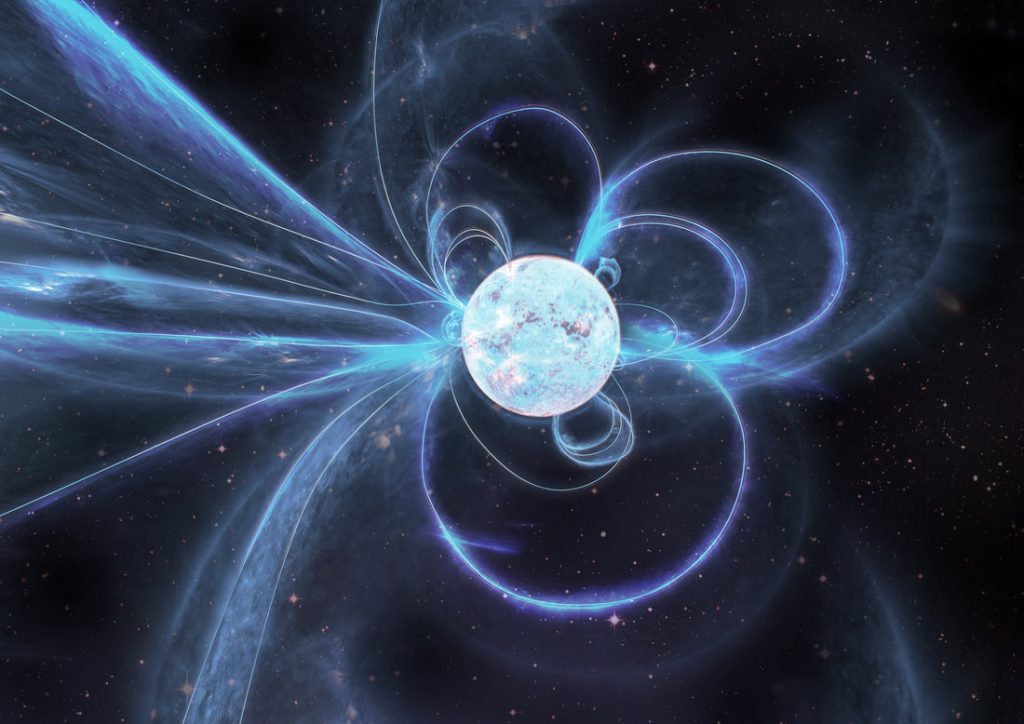
With your standard pulsar, you have a fast-rotating star, and the magnetic pole of the star is out of alignment; every time the magnetic pole sweeps past, you see a pulse. With a magnetar, well, we’re still figuring that out, but we thought their magnetic and rotational poles were aligned. This star — this weirdo neutron star that appears to be both a magnetar and a pulsar — this star appears to have a magnetic field that is twisted up in ways that look like nothing we’ve ever seen before.
According to Ph.D. student Marcus Lower: From our observations, we found that the magnetic axis of J1818 isn’t aligned with its rotation axis. Instead, the radio-emitting magnetic pole appears to be in its southern hemisphere, located just below the equator. … This is the first time we have definitively seen a magnetar with a misaligned magnetic pole.
In a new paper in Monthly Notices of the Royal Astronomical Society, with Lower as the first author, the magnetic field is described as having two closely spaced poles that are connected by distorted magnetic field lines. This is like if you shoved a horseshoe magnet into the star, with its north and south poles sticking out the side of the star.
And, if this isn’t weird enough, in August the magnetic field temporarily rearranged itself. Lower goes on to explain: Our best geometric model for this date suggests that the radio beam briefly flipped over to a completely different magnetic pole located in the northern hemisphere of the magnetar.
Exactly what is going on is still being figured out. There are plans to continue observing this wild object to try and understand what behavior is normal and abnormal for it. It’s thought this may be a fairly recently formed neutron star, and it could be this is just the normal misbehavior of a star settling into a new configuration. We don’t know. Hopefully, we’ll be back talking about this object a third time, explaining exactly what is going on, in the not too distant future.
Switching gears, our next story takes a quick look at the ratio of visible matter to invisible dark matter in a nearby dwarf galaxy.
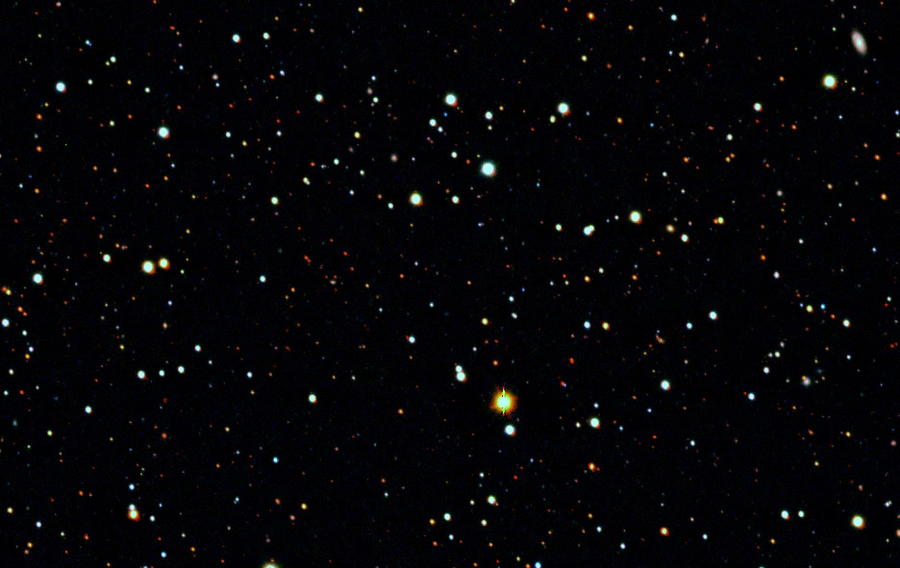
Large, healthy galaxies like ours, with star formation and a complex structure, are thought to form through the merger of dwarf galaxies. We can even observe myriad small galaxies being gravitationally pulled into our own Milky Way and shredded as our galaxy consumes them. Researchers study today’s surviving dwarf galaxies to understand what went into making our galaxy. One of these dwarf galaxies is Tucana II, a dwarf galaxy faintly visible in the southern sky. This system has very primitive stars that are a thousand times less rich in heavy elements than our Sun and that recent observations revealed to be larger than previously thought.
In new work published in Nature Astronomy with first author Anirudh Chiti, astronomers were able to identify knots of super bland stars far from the galaxy’s core. The average star in Tucana II has a thousand times fewer heavy elements than our Sun, as we mentioned before, and these new stars have one-third of those heavy elements. Since heavy elements form over time inside stars, this implies that the stars in the outskirts formed from more primitive — more bland — material than the core.
In fact, this dwarf galaxy may actually be the result of two even smaller dwarf galaxies merging, with the two sets of stars coming from different systems.
The motions of these stars also allow us to measure the galaxy’s mass, and it appears this system has significantly more — three to five times more — dark matter than previously thought. According to co-author Anna Frebel: We have thought that the first galaxies were the tiniest, wimpiest galaxies. But they actually may have been several times larger than we thought, and not so tiny after all.
The two galaxies, now appearing as one, will eventually be consumed by the Milky Way. It’s a galaxy-eat-galaxy universe out there.
We head out into the solar system with our planetary science now, and our next story comes from a colleague of mine during my internship, so I’m pretty excited for him.
Scientists have known for years that Mars once had a thick atmosphere and could actually keep liquid water on its surface. Then it lost that atmosphere to space, and now only has an atmosphere that is 1% the density of Earth’s. One possibility for studying that lost atmosphere is by sampling the surface layer of Mars’ moon, Phobos, which has been bombarded by the escaping atmospheric ions. Those ions of oxygen, carbon, nitrogen, and argon could be preserved in the uppermost layers of rock.
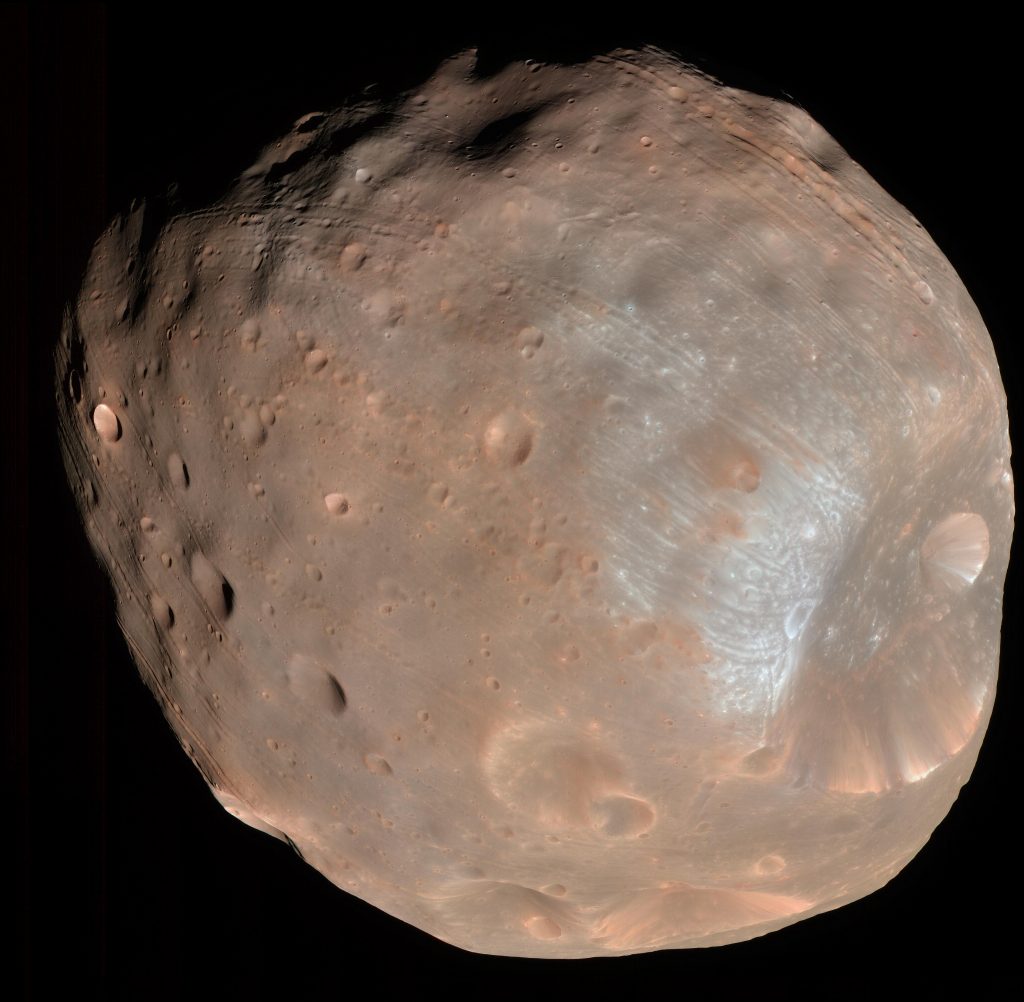
And to make the sampling easier, Phobos is tidally locked to Mars, so the same side faces the planet all the time. So long as a sample is taken from the facing side, it should show evidence of that atmosphere, if it has been preserved as predicted. Even better, JAXA has a mission called the Martian Moons Exploration probe that is scheduled for a 2024 launch and includes collecting samples from Phobos as part of its mission plan.
As scientist Quentin Nénon said: With a sample from the near side, we could see an archive of the past atmosphere of Mars in the shallow layers of grain, while deeper in the grain we could see the primitive composition of Phobos.
The reason we think this idea will work is that it already has with the Moon. Samples taken from the Moon during the Apollo missions recorded atoms coming from the Sun and Earth, creating a historical record of part of the early solar system. With no atmosphere or erosion, the Moon’s surface provides a well-preserved archive for us to research, and the same should be true of Phobos.
Finally, we head out to Jupiter to revisit an old friend of the show, Ganymede. In a new paper published in The Planetary Science Journal, a team of scientists analyzed data from the Atacama Large Millimeter/submillimeter Array (ALMA) taken at several different millimeter wavelengths to create a thermal model of Jupiter’s largest moon. This data allowed them to create a global temperature map and identify a few interesting features.
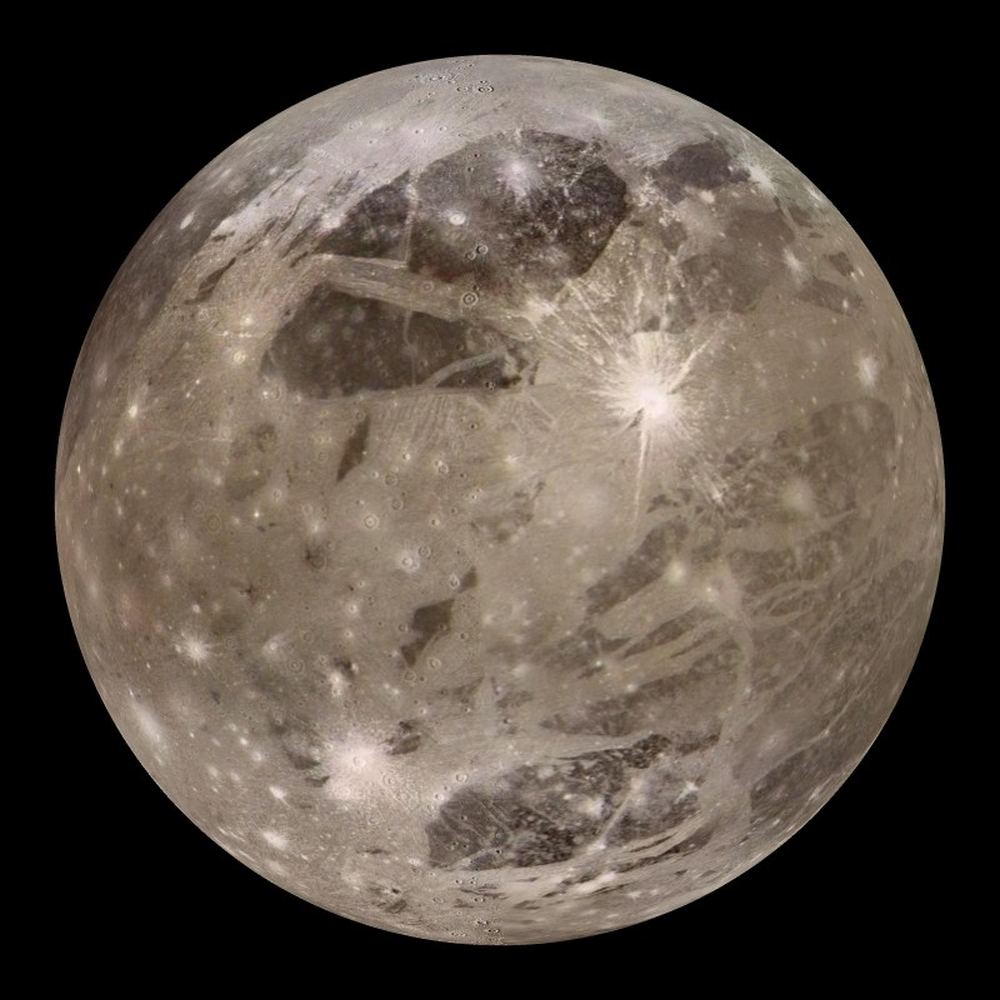
First off, Ganymede gets more densely packed the further below the surface you go, dropping from 85% porosity to 10%. The more porous the rock, the more easily it responds to changes in heating, so the outer surface will react more quickly than the subsurface rock. That means just a little heat from the daytime sunlight, even at that distance, could have a substantial effect on the expansion and contraction of the surface.
Next, there are a few craters that are cooler than expected, which could mean some localized variation in composition, porosity, or even the properties of the grains of rock. Maybe even some combination of those qualities.
Last but definitely not least, there are a few large-scale deviations in the temperatures expected: excess heat was measured at the equator, and at the middle latitudes, cooler temps. These results likely mean that Ganymede’s surface temperatures are mostly influenced by external processes such as micrometeorite and plasma bombardment from Jupiter.
The team is planning to do further studies using ALMA data, including more analysis of Ganymede as well as Jupiter’s moons Europa and Callisto. We’ll bring you those results here on the Daily Space when they are available.
Last week, we brought you the story of a newly discovered system, which, as Pamela said, is a single star system with six stars, arranged in pairs, that, like dancers on a dance floor, all appear to circle in the same plane on the sky. The system was found in NASA TESS data and was found using machine learning software designed to look for eclipsing binary stars.
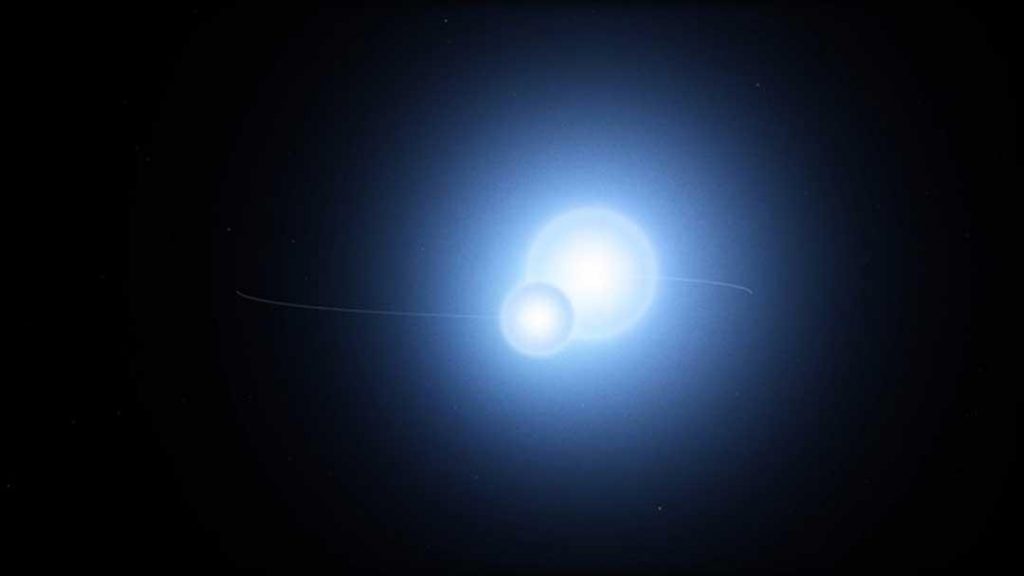
All six stars appear as a single point of light that over time varies in brightness from our perspective here on Earth, which means a lot of geometry had to be just right for us to see the various eclipsing stars. The two inner pairs of stars are in a relatively tight orbit with each other, and there is a third pair of stars much farther out that shares a common center of gravity. It’s definitely a complicated dance and begs the question of how such a system could form in the first place.
And now we welcome one of the lead authors of the soon to be published paper, Dr. Veselin Kostov, to the show. Dr. Kostov is a research scientist for the SETI Institute, although he works out of NASA Goddard Space Flight Center in Maryland. His research focuses on the discovery and characterization of exoplanets. Welcome, Dr. Kostov and thank you for joining us today.
[Interview]
Thank you, Dr. Kostov, for joining us, and thank you, everyone, for listening.
This has been the Daily Space.
Learn More
Magnetar’s Identity Crisis Indicates Unknown Magnetic Field Complexity
- OzGrav press release
- “The dynamic magnetosphere of Swift J1818.0–1607,” M E Lower et al., 2020 December 14, Monthly Notices of the Royal Astronomical Society
Extended Dark Matter Halo Found Around Dwarf Galaxy
- MIT press release
- “An extended halo around an ancient dwarf galaxy,” Anirudh Chiti et al., 2021 February 1, Nature Astronomy
Regolith of Phobos Could Hold Secrets of Lost Martian Atmosphere
- NASA Goddard press release
- “Implantation of Martian atmospheric ions within the regolith of Phobos,” Q. Nénon et al., 2021 February 1, Nature Geoscience
Ganymede Gets a Global Temperature Map
- AAS Nova article
- “Ganymede’s Surface Properties from Millimeter and Infrared Thermal Emission,” Katherine de Kleer et al., 2021 January 22, The Planetary Science Journal
Sextuple Eclipsing Binary System Found in TESS Data
- SETI Institute press release
- NASA Goddard press release
- “TIC 168789840: A Sextuply-Eclipsing Sextuple Star System,” Brian P. Powell et al., to be published in The Astronomical Journal (preprint on arxiv.org)
Credits
Written by Pamela Gay and Beth Johnson
Hosted by Pamela Gay and Beth Johnson
Audio and Video Editing by Ally Pelphrey
Content Editing by Beth Johnson
Intro and Outro music by Kevin MacLeod, https://incompetech.com/music/


 We record most shows live, on Twitch. Follow us today to get alerts when we go live.
We record most shows live, on Twitch. Follow us today to get alerts when we go live.